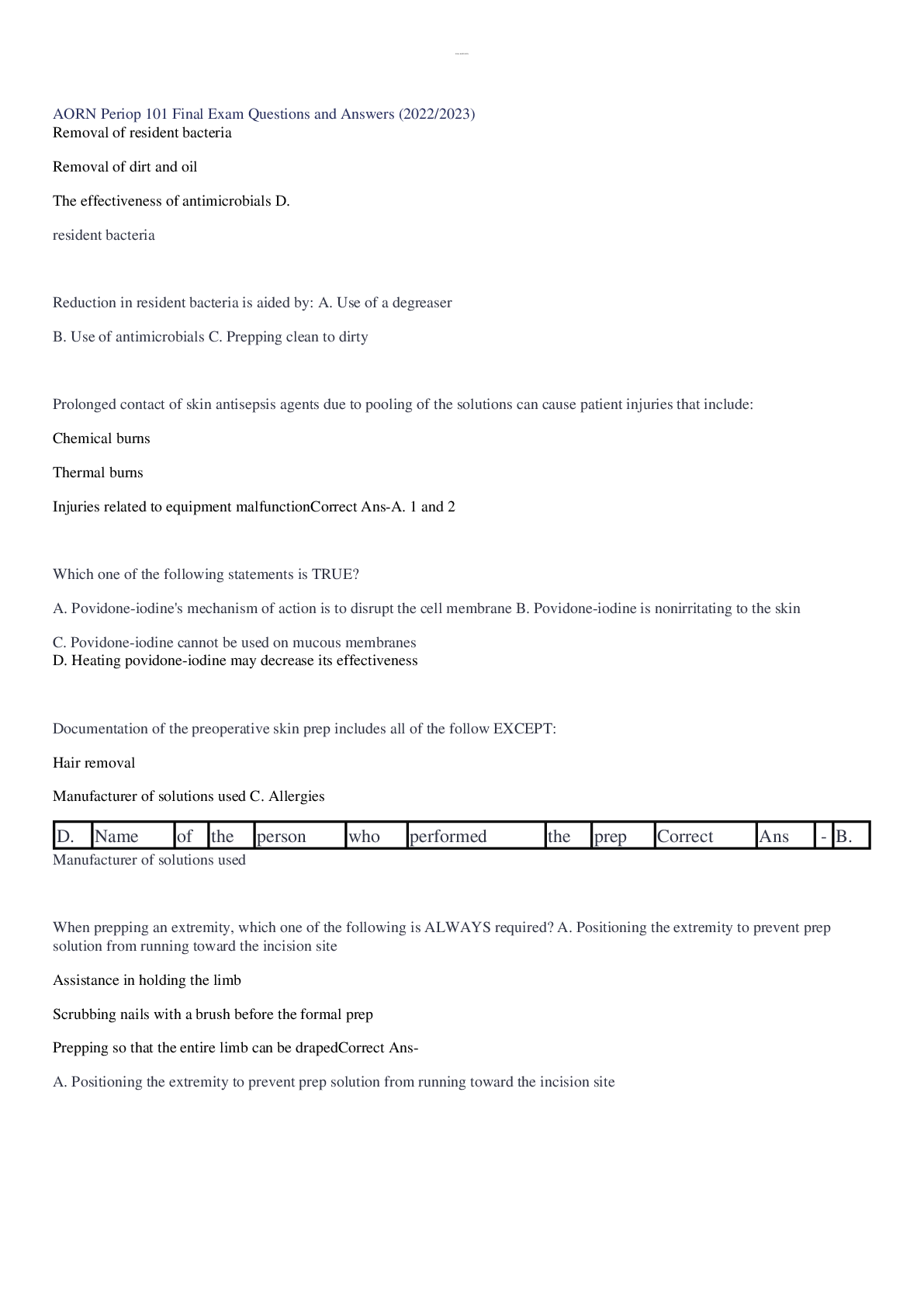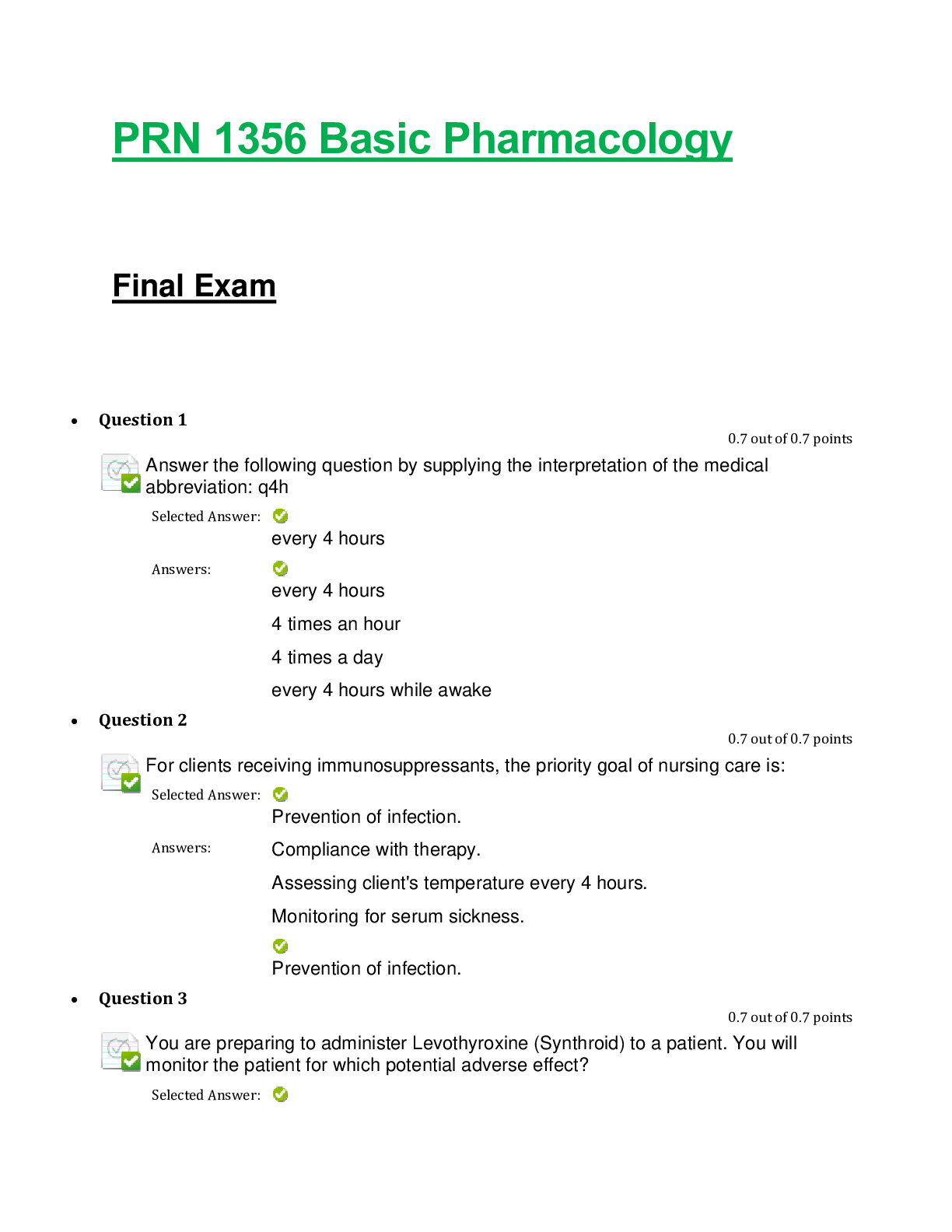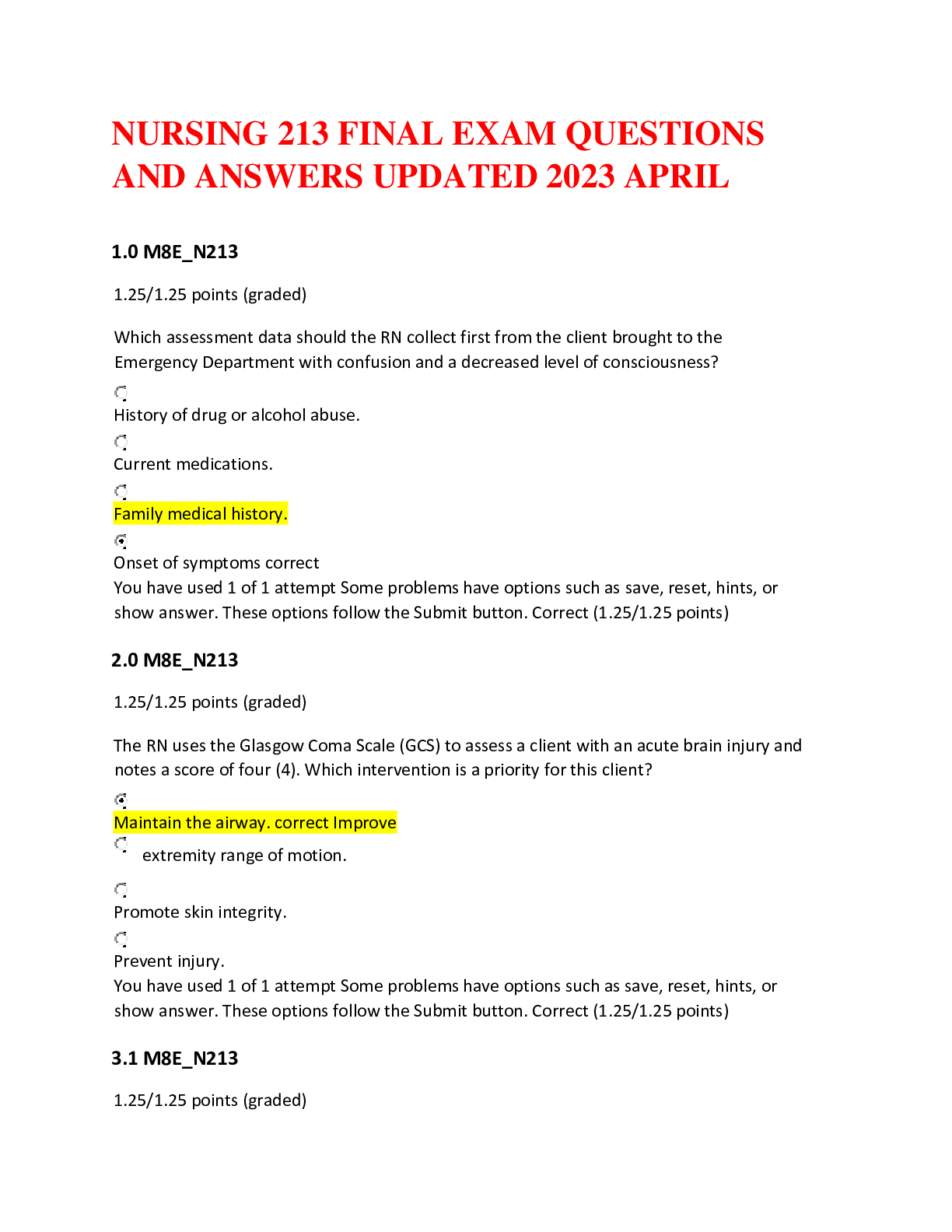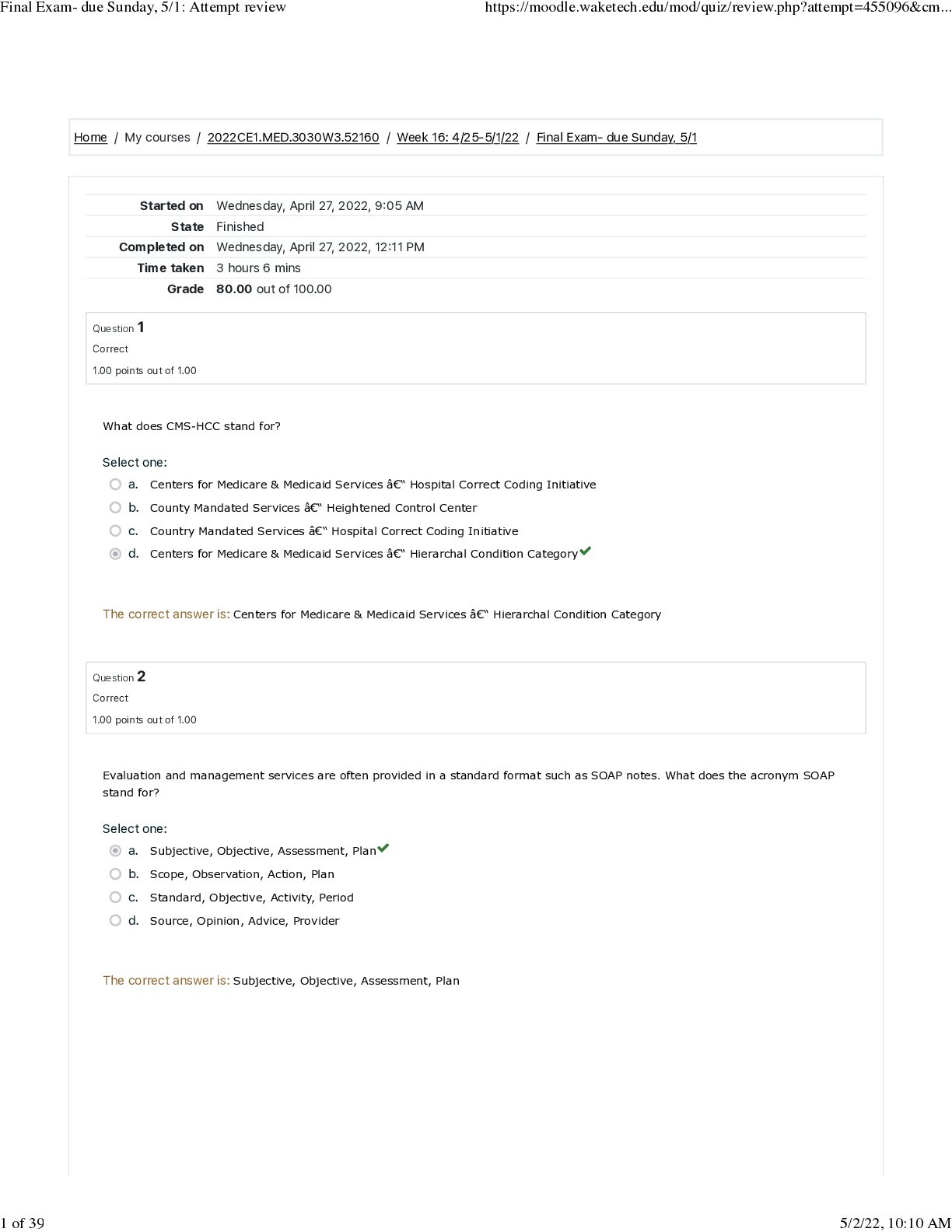Med-Surg HESI Final Exam Questions & Answers
Document Content and Description Below
Med-Surg HESI Final Exam Questions & Answers-The nurse is assessing a client's laboratory values following administration of chemotherapy. Which lab value leads the nurse to suspect that the client is... experiencing tumor lysis syndrome (TLS)? a. Serum PTT of 10 seconds. b. Serum calcium of 5 mg/dL. c. Oxygen saturation of 90%. d. Hemoglobin of 10 g/dL - B - Tumor lysis syndrome (TLS) results in hyperkalemia, hypocalcemia, hyperuricemia, and hyperphosphatemia. A serum calcium level of 5, which is low, is an indicator of possible tumor lysis syndrome. Which description of symptoms is characteristic of a client diagnosed with trigeminal neuralgia (tic douloureux)? a. Tinnitus, vertigo, and hearing difficulties. b. Sudden, stabbing, severe pain over the lip and chin. c. Facial weakness and paralysis. d. Difficulty in chewing, talking, and swallowing. - B - Trigeminal neuralgia is characterized by paroxysms of pain, similar to an electric shock, in the area innervated by one or more branches of the trigeminal nerve (5th cranial). Women are more often afflicted with this condition and generally occurs in clients over the age of 50 years old. Which discharge instruction is most important for a client after a kidney transplant? a. Weigh weekly. b. Report symptoms of secondary Candidiasis. c. Use daily reminders to take immunosuppressants. d. Stop cigarette smoking. - C - After a renal transplantation, acute rejection is a high risk for several months. The organ recipient will have to take immunosuppressive therapy for the rest of their lives, such as corticosteroids and azathioprine, to prevent organ transplant rejection. Discharge instructions include measures such as daily reminders to ensure the client takes these medications regularly to prevent organ rejection from occurring. The nurse is providing dietary instructions to a 68-year-old client who is at high risk for development of coronary heart disease (CHD). Which information should the nurse include? a. Limit dietary selection of cholesterol to 300 mg per day. b. Increase intake of soluble fiber to 10 to 25 grams per day. c. Decrease plant stanols and sterols to less than 2 grams/day. d. Ensure saturated fat is less than 30% of total caloric intake. - B - To reduce risk factors associated with coronary heart disease, the daily intake of soluble fiber should be increased to between 10 and 25 grams per day. According to the American Heart Association, soluble fibers helps reduce LDL cholesterol levels. Two days postoperative, a male client reports aching pain in his left leg. The nurse assesses redness and warmth on the lower left calf. Which intervention would be most helpful to this client? a. Apply sequential compression devices (SCDs) bilaterally. b. Assess for a positive Homan's sign in each leg. c. Pad all bony prominences on the affected leg. d. Advise the client to remain in bed with the leg elevated. - D - For a client exhibiting symptoms of deep vein thrombosis (DVT), a complication of immobility, the initial care includes bedrest and elevation of the extremity. A middle-aged male client with diabetes continues to eat an abundance of foods that are high in sugar and fat. According to the Health Belief Model, which event is most likely to increase the client's willingness to become compliant with the prescribed diet? a. He visits his diabetic brother who just had surgery to amputate an infected foot. b. He is provided with the most current information about the dangers of untreated diabetes. c. He comments on the community service announcements about preventing complications associated with diabetes. d. His wife expresses a sincere willingness to prepare meals that are within his prescribed diet. - A - The loss of a limb due to diabetes by a family member should be the strongest event or "cue to action" and is most likely to increase the client's perceived seriousness of the disease. A 58-year-old client who has been post-menopausal for five years is concerned about the risk for osteoporosis because her mother has the condition. Which information should the nurse offer? a. Osteoporosis is a progressive genetic disease with no effective treatment. b. Calcium loss from bones can be slowed by increasing calcium intake and exercise. c. Estrogen replacement therapy should be started to prevent the progression osteoporosis. d. Low-dose corticosteroid treatment effectively halts the course of osteoporosis. - B - Post-menopausal females are at risk for osteoporosis due to the cessation of estrogen secretion, but a regimen including calcium, vitamin D, and weight-bearing exercise can help prevent further bone loss. The nurse notes that the only ECG for a 55-year-old male client scheduled for surgery in two hours is dated two years ago. The client reports that he has a history of "heart trouble," but has no problems at present. Hospital protocol requires that those over 50 years of age have a recent ECG prior to surgery. Which nursing action is best for the nurse to implement? a. Ask the client what he means by "heart trouble." b. Call for an ECG to be performed immediately. c. Notify surgery that the ECG is over two years old. d. Notify the client's surgeon immediately. - B Which information about mammograms is most important to provide a post-menopausal female client? a. Breast self-examinations are not needed if annual mammograms are obtained. b. Radiation exposure is minimized by shielding the abdomen with a lead-lined apron. c. Yearly mammograms should be done regardless of previous normal x-rays. d. Women at high risk should have annual routine and ultrasound mammograms - C - There are different recommendations from different agnecies. For a client with no risk factors, the earliest breast screening recommendation is a yearly mammogram at the age 40 and till the age of 54. After that every two years. The American College of OB/GYN still recommend starting mammograms starting at the age of 40 and yearly screeenings. The American Cancer Society new guidelines recommend starting at the age of 45 and thereafter till the age of 54 years old, then every two years. The US Preventive Services Task Force Services (USPSTS) recommends starting at the age of 50 years old and screenings every two years thereafter. The nurse is caring for a client with a continuous feeding through a percutaneous endoscopic gastrostomy (PEG) tube. Which intervention should the nurse include in the plan of care? A. Flush the tube with 50 ml of water q 8 hours. B. Check for tube placement and residual volume q4 hours. C. Obtain a daily x- ray to verify tube placement. D. Position on left side with head of bed elevated 45 degrees - B - Percutaneous endoscopic gastrostomy (PEG) tube placement and residual volume should be checked every four hours for clients on continuous feeding. If the gastric residual is more than 200mL for an adult client; stop the feeding and re-check the gastric residual one hour later. If the residual still remains more than 200mL; continue to keep the feeding on hold and contact the client's health care provider. A 58-year-old client who has been post-menopausal for five years is concerned about the risk for osteoporosis because her mother has the condition. Which information should the nurse offer? A. Osteoporosis is a progressive genetic disease with no effective treatment. B. Calcium loss from bones can be slowed by increasing calcium intake and exercise. C. Estrogen replacement therapy should be started to prevent the progression osteoporosis. D. Low-dose corticosteroid treatment effectively halts the course of osteoporosis. - B - Post-menopausal females are at risk for osteoporosis due to the cessation of estrogen secretion, but a regimen including calcium, vitamin D, and weight-bearing exercise can help prevent further bone loss. A client has undergone insertion of a permanent pacemaker. When developing a discharge teaching plan, the nurse writes a goal of, "The client will verbalize symptoms of pacemaker failure." Which symptoms are most important to teach the client? A. Facial flushing. B. Fever. C. Pounding headache. D. Feelings of dizziness. - D - Feelings of dizziness may occur as the result of a decreased heart rate, leading to a decreased cardiac output which may be an indication of pacemaker failure. The nurse is receiving report from surgery about a client with a penrose drain who is to be admitted to the postoperative unit. Before choosing a room for this client, which information is most important for the nurse to obtain? A. If suctioning will be needed for drainage of the wound. B. If the family would prefer a private or semi-private room. C. Prescription for removal of the drain. D. If the client's wound is infected. - D - Penrose drains provide a sinus tract or opening and are often used to provide drainage of an abscess. The fact that the client has a penrose drain should alert the nurse to the possibility that the client is infected. To avoid contamination of another postoperative client, it is most for the nurse to verify the condition of the wound and if infected, important to place client in a private room. The nurse is teaching a female client who uses a contraceptive diaphragm about reducing the risk for toxic shock syndrome (TSS). Which information should the nurse include? (Select all that apply.) A. Remove the diaphragm immediately after intercourse. B. Wash the diaphragm with an alcohol solution. C. Use the diaphragm to prevent conception during the menstrual cycle. D. Do not leave the diaphragm in place longer than 8 hours after intercourse. E. Replace the old diaphragm every 3 months. - D, E - The diaphragm needs to remain against the cervix for 6 to 8 hours to prevent pregnancy but should not remain for longer than 8 hours to avoid the risk of toxic shock syndrome. The diaphragm should be replaced every 3 months to maintain integrity. [Show More]
Last updated: 2 months ago
Preview 1 out of 32 pages
Instant download
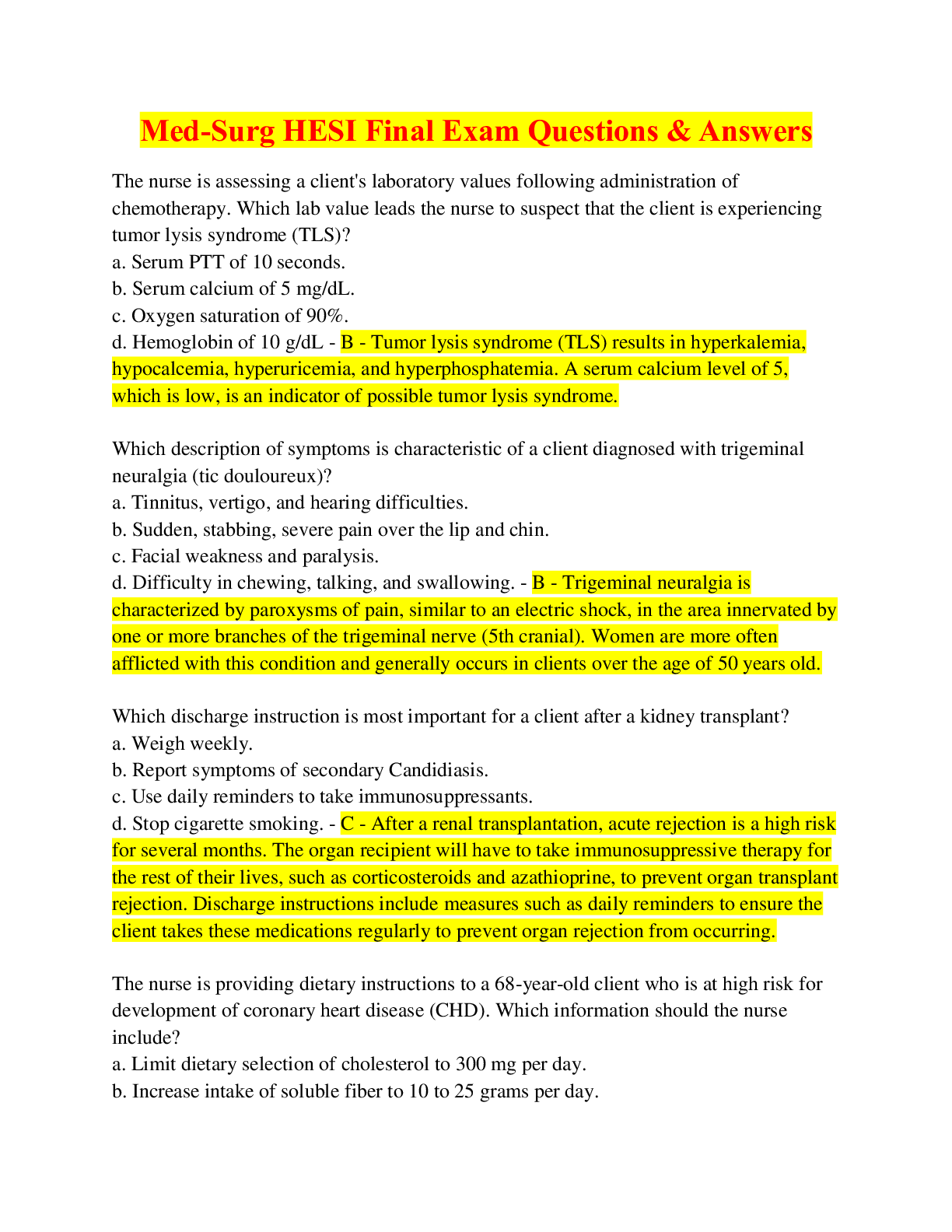
Instant download
Reviews( 0 )
Document information
Connected school, study & course
About the document
Uploaded On
Mar 10, 2024
Number of pages
32
Written in
Additional information
This document has been written for:
Uploaded
Mar 10, 2024
Downloads
0
Views
18






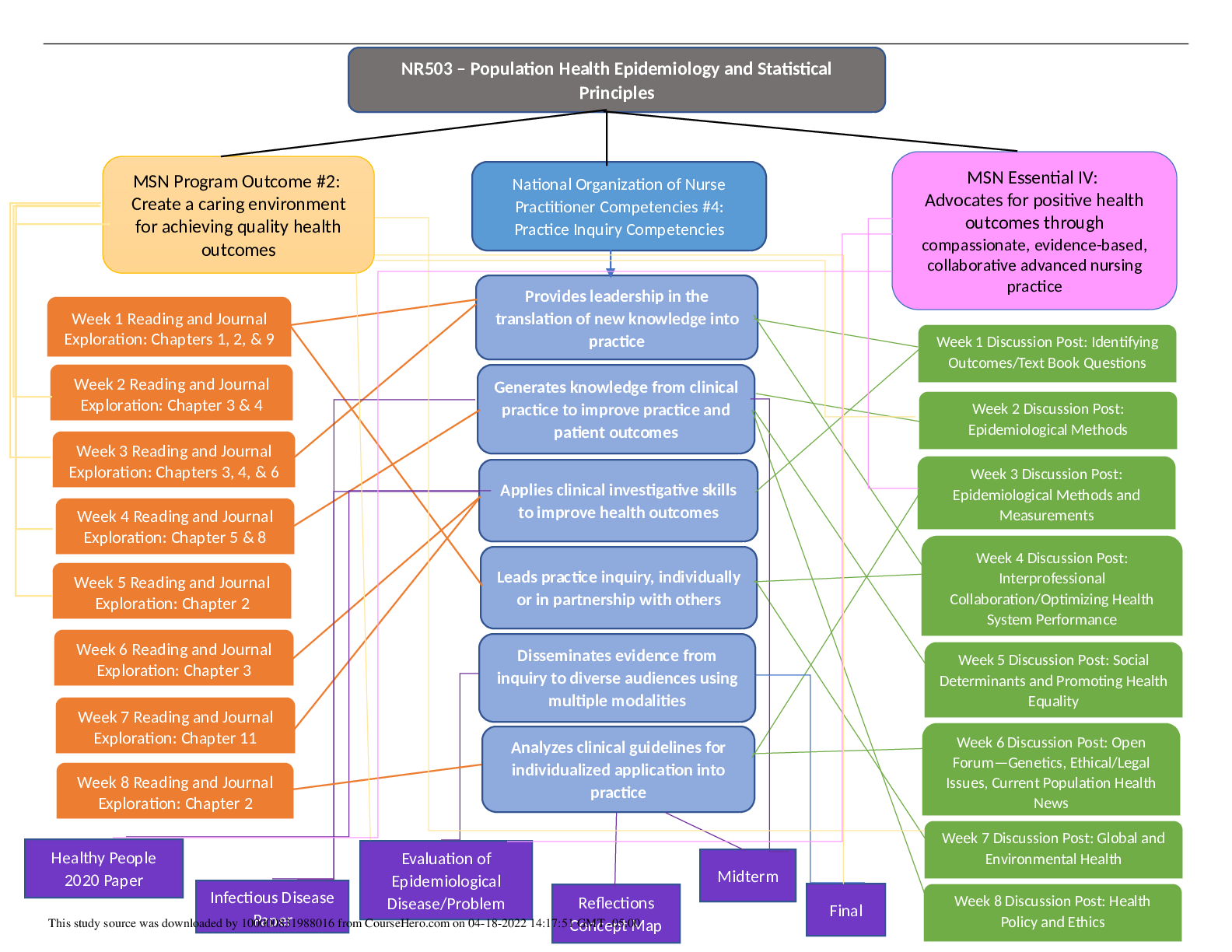

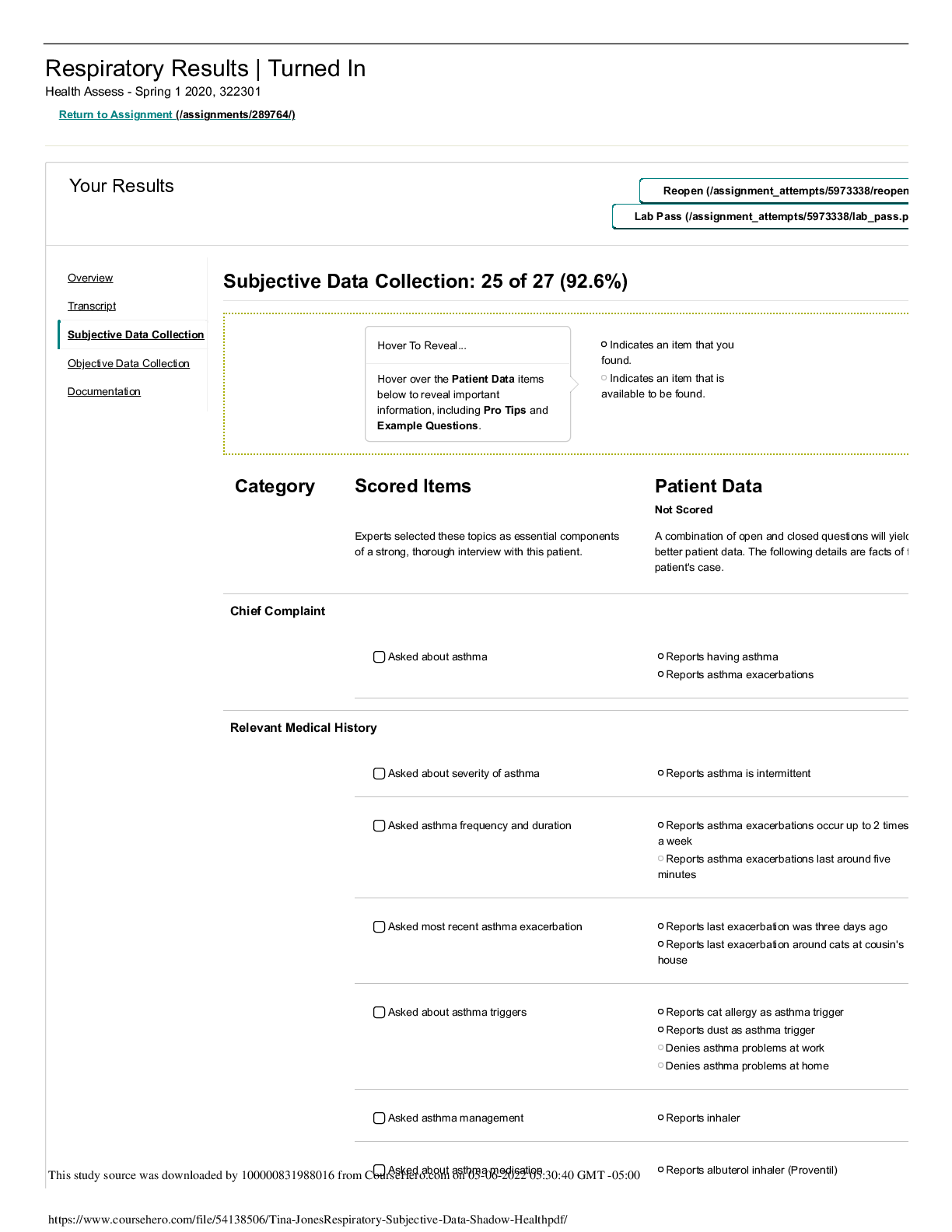
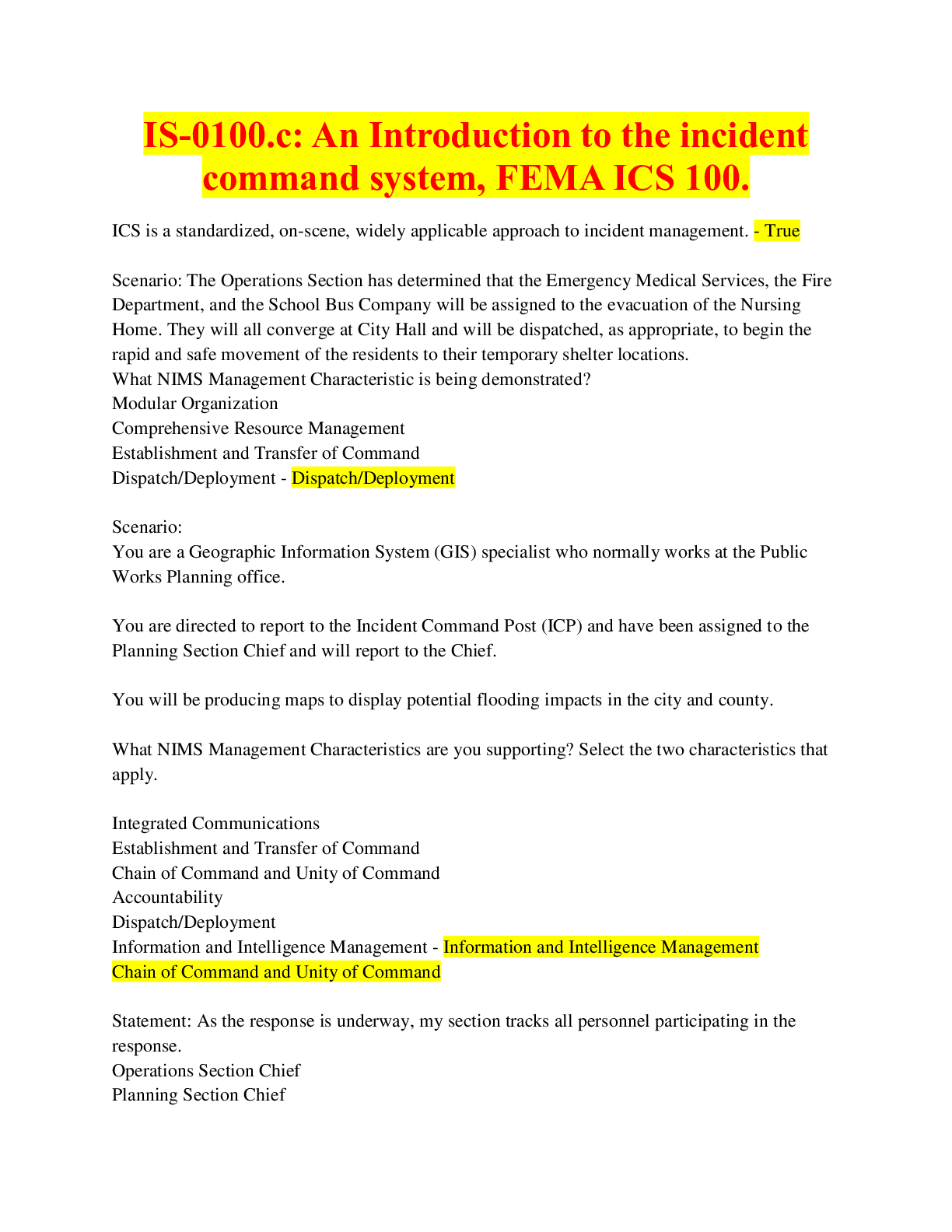



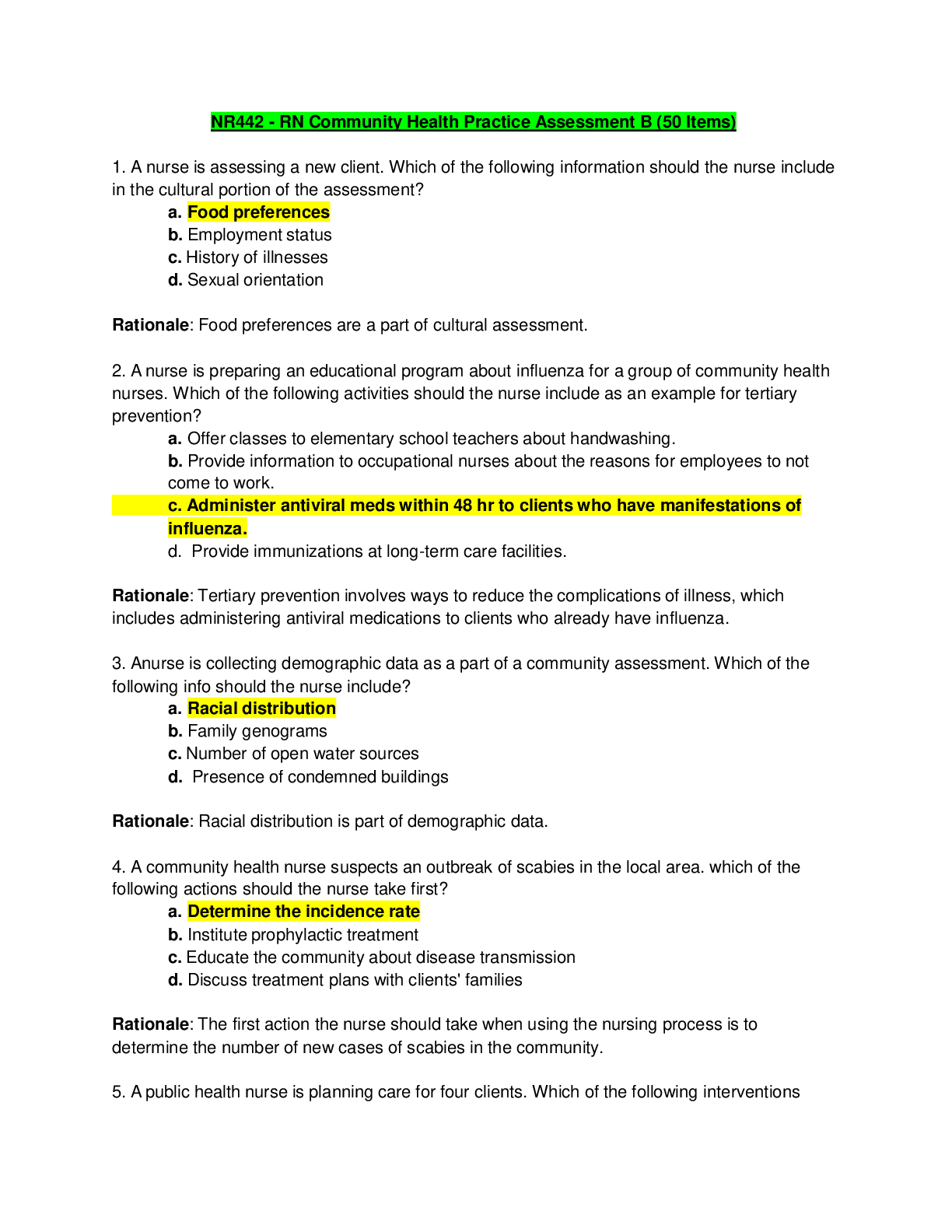


.png)
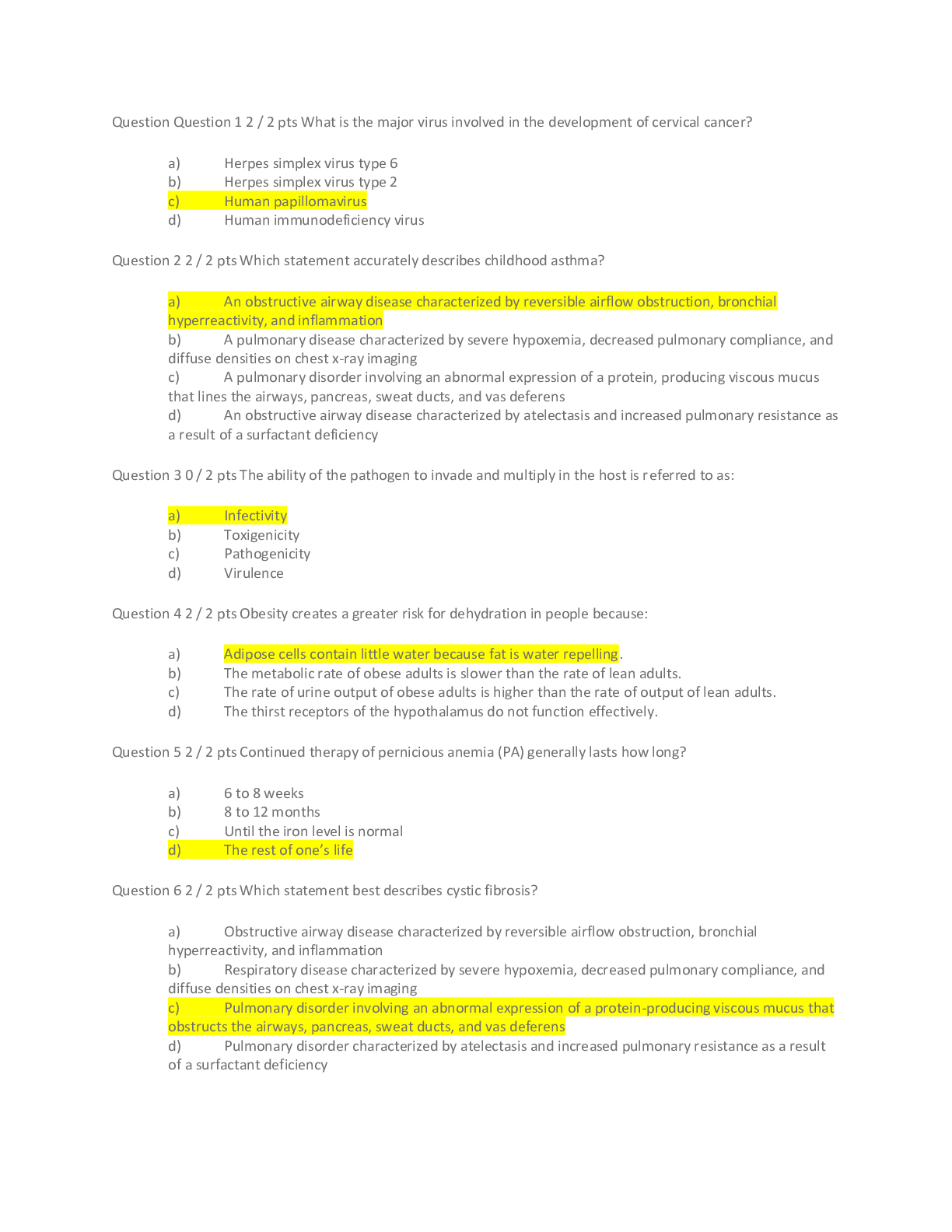
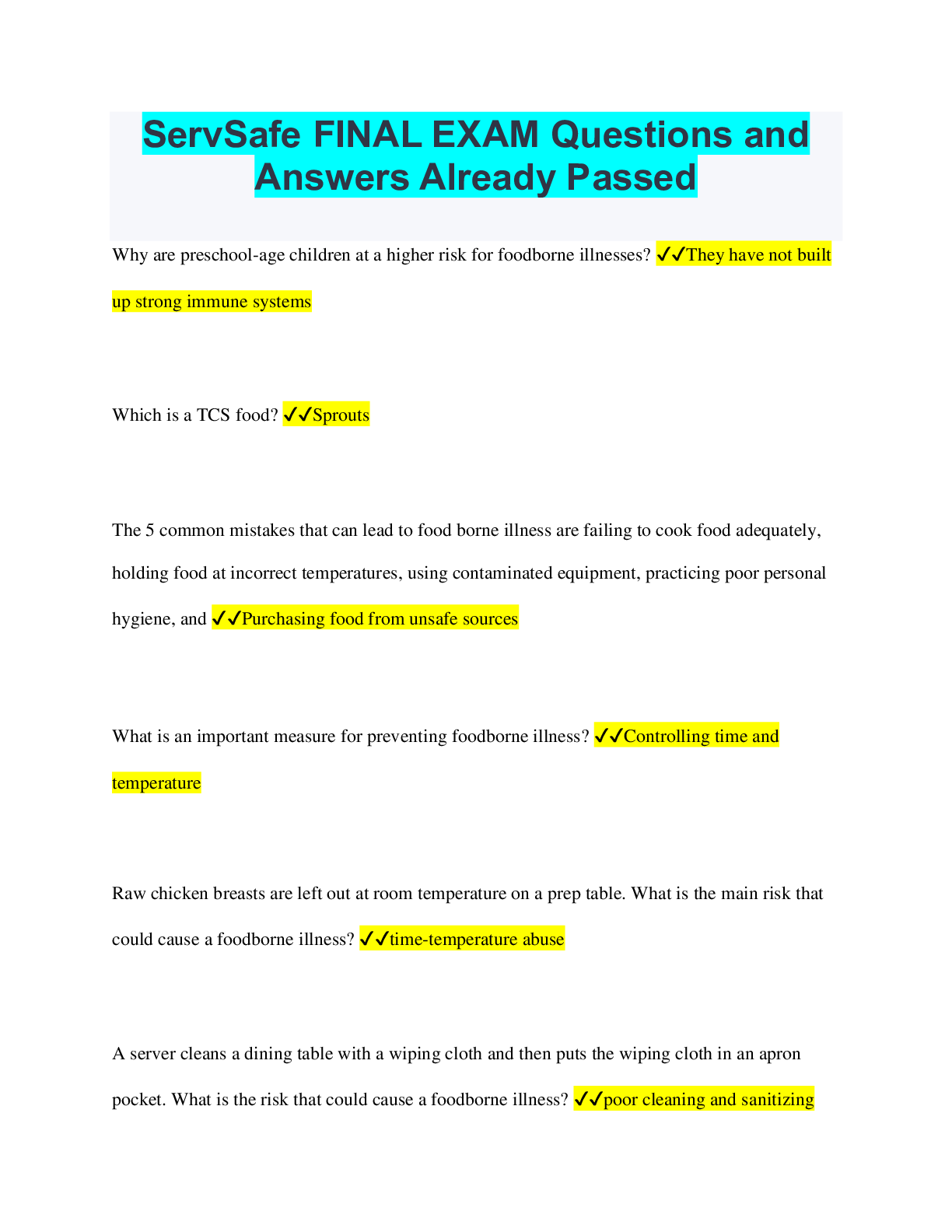


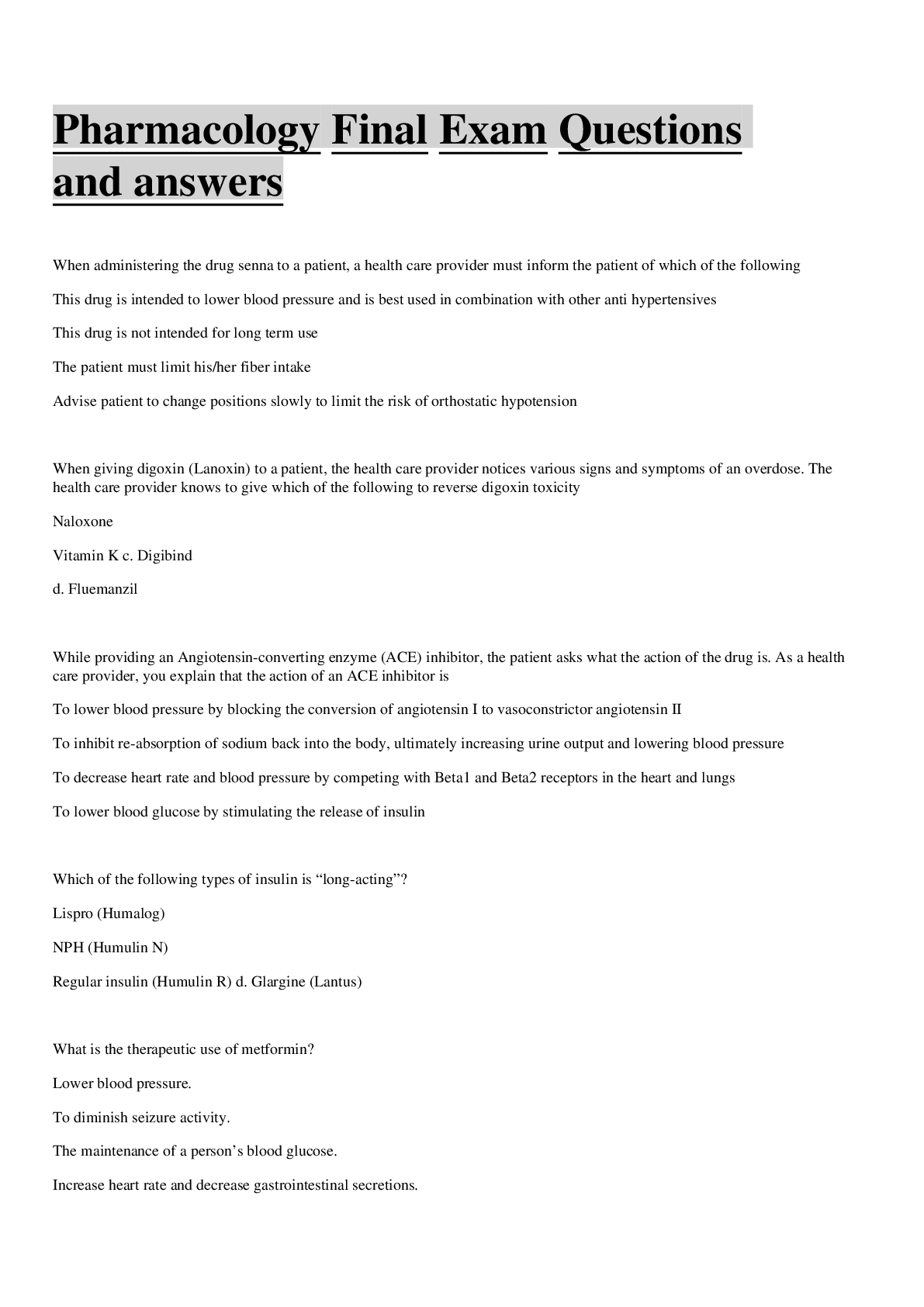
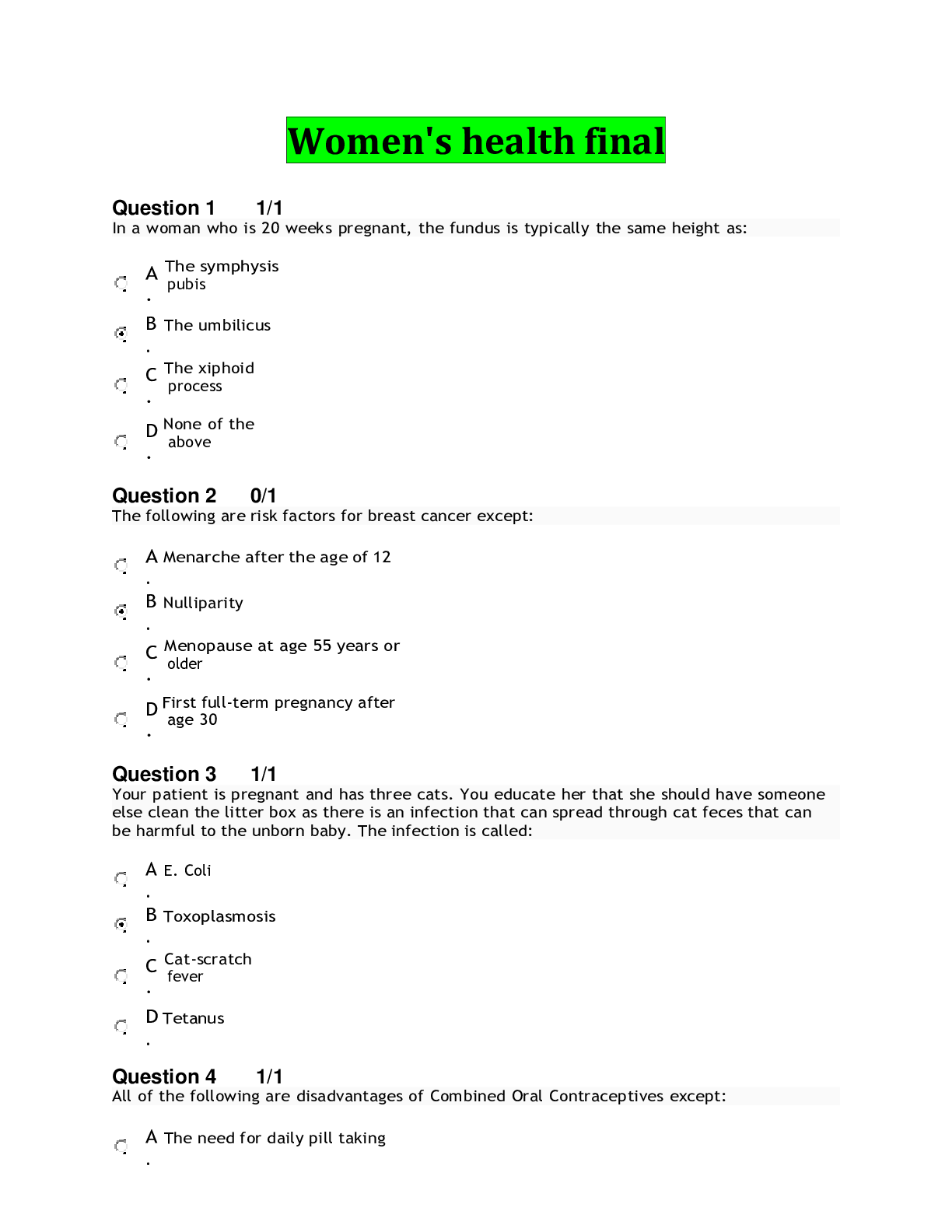


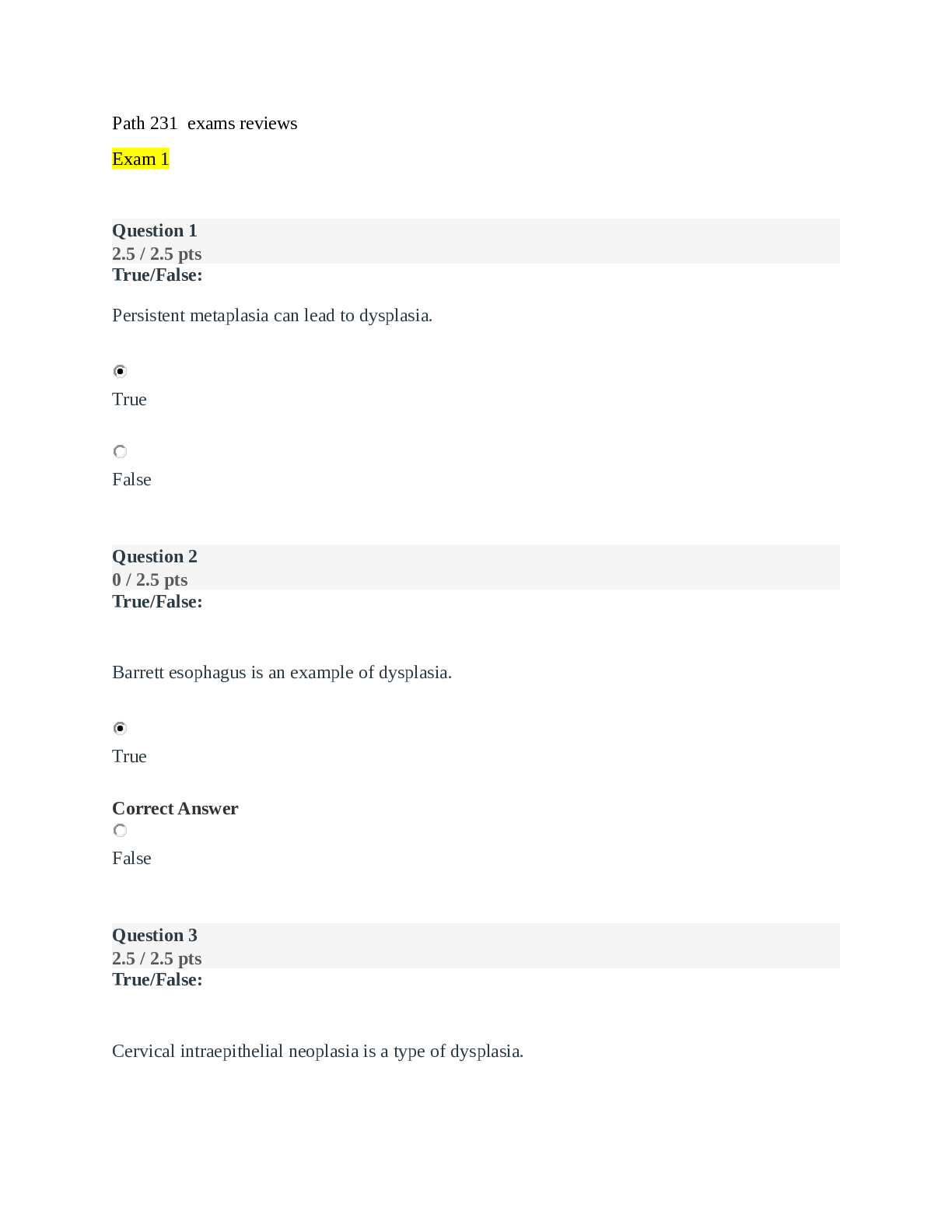
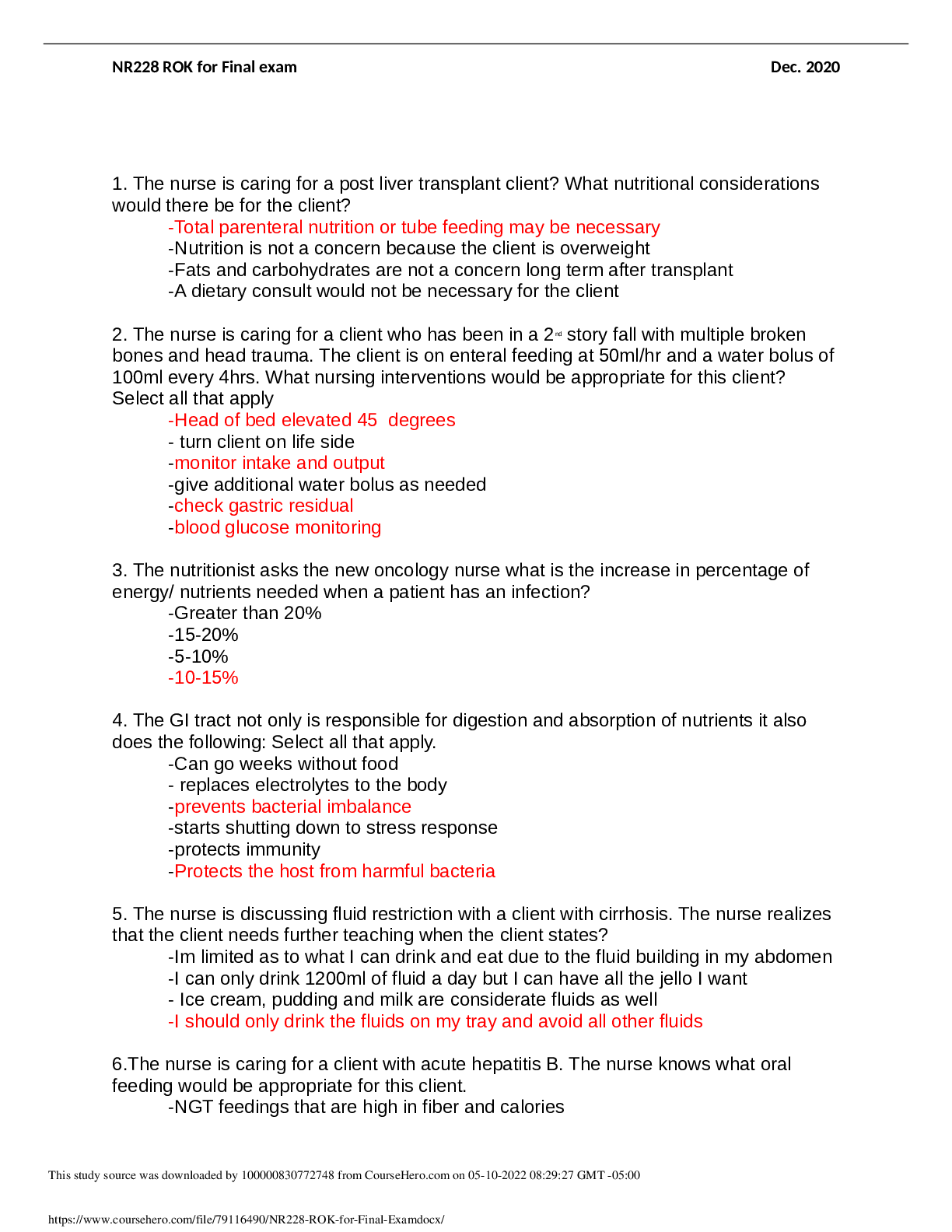

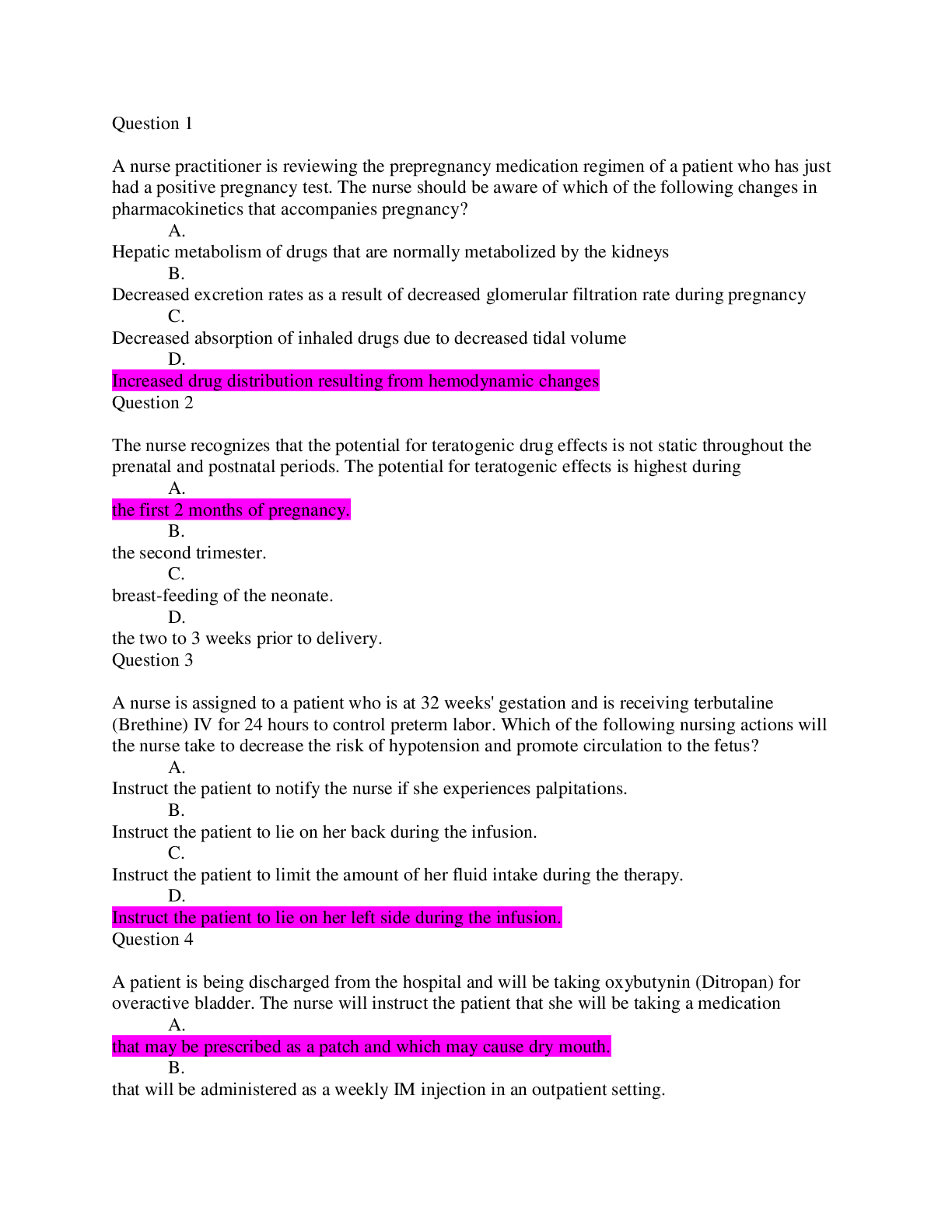
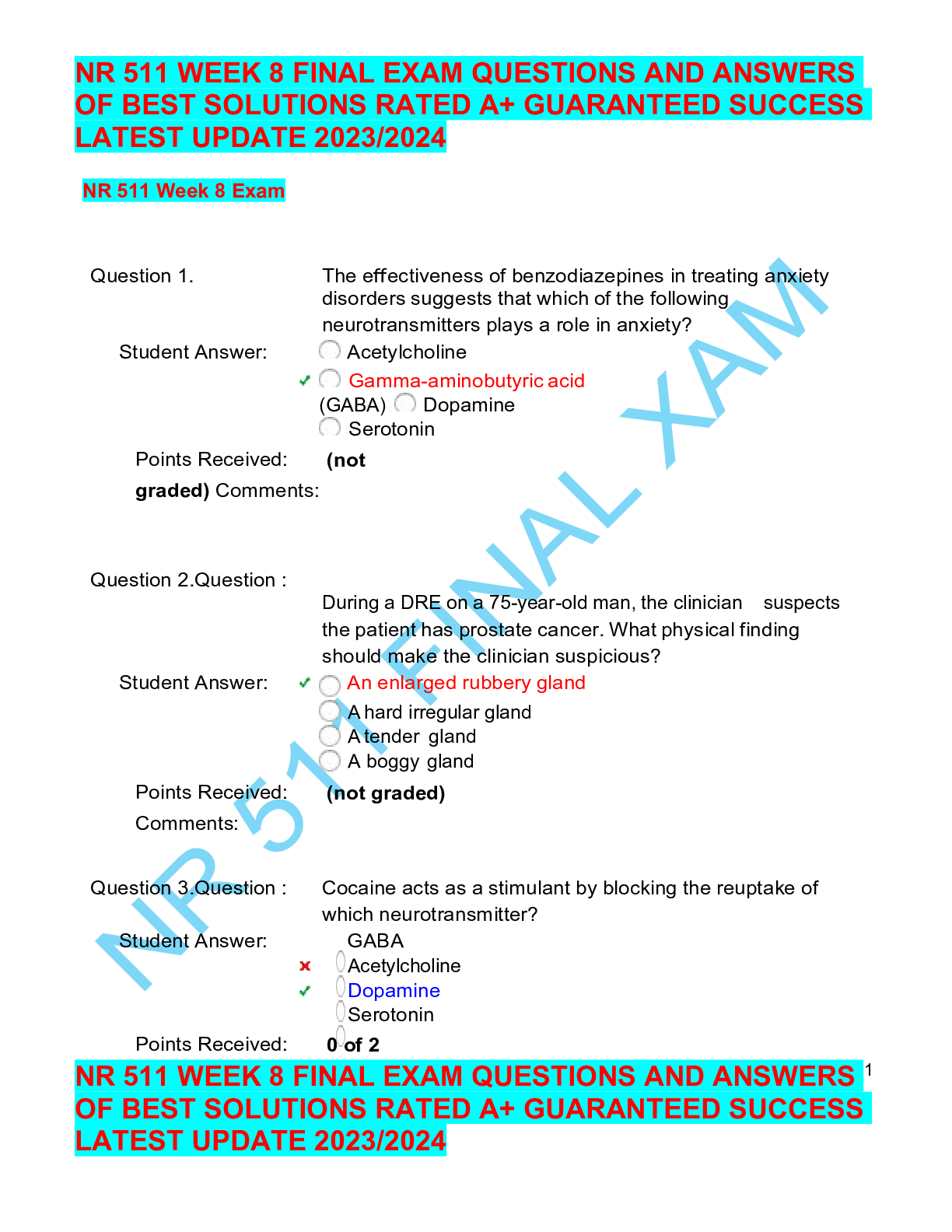
.png)

